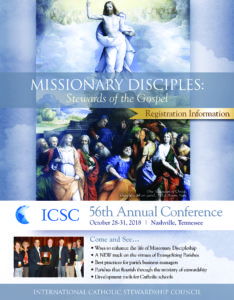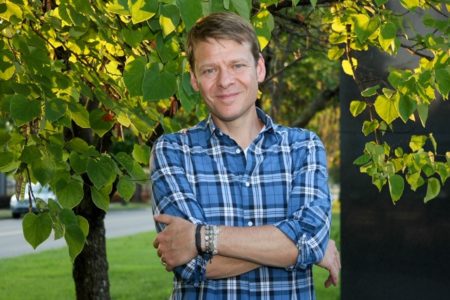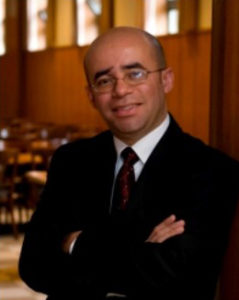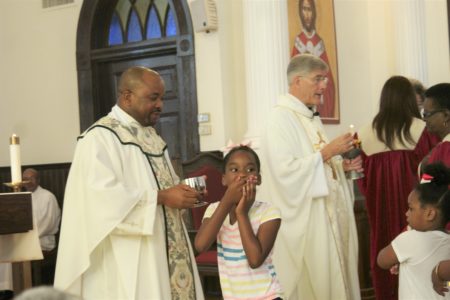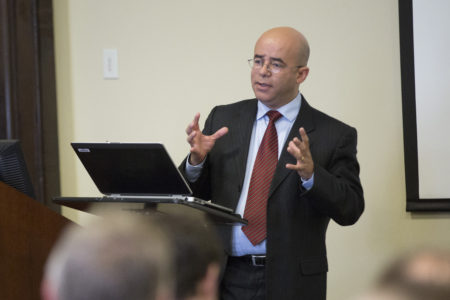
El doctor Ospino le dijo en una entrevista a Catholic News Service que a medida que se desarrolla el proceso nacional del encuentro, surge la necesidad de que todos los líderes de la iglesia de los Estados Unidos fortalezcan su alcance a los jóvenes y adultos jóvenes hispanos. (Foto CNS / Jaclyn Lippelmann, Norma Católica)
Por Maureen Smith
JACKSON – Dos de las principales voces en el Ministerio Hispano en Estados Unidos están llegando a la Diócesis de Jackson. El Dr. Hosffman Ospino y Robert Feduccia dirigirán el taller de formación de fe de este año. El próximo sábado 25 de agosto, el Dr. Ospino y el señor Feduccia serán los principales oradores el Día de la Formación de Fe. La Oficina del Ministerio Hispano y el Departamento de Formación de Fe están aprovechando la oportunidad para organizar también una serie de talleres y conferencias con ambos.
El Dr. Ospino, profesor asociado de teología y educación religiosa en la Escuela de Teología y Ministerio del Boston College es miembro del equipo de liderazgo del V Encuentro.
Feduccia es nativo de Brookhaven y participó activamente en el grupo de jóvenes de St. Francis. Incluso fue seminarista de la diócesis antes de discernir un llamado a la vida matrimonial. Ayudó a fundar un programa de liderazgo litúrgico para jóvenes llamado “Un Pan, Una Copa” en el seminario de St. Meinrad y ha trabajado con la Conferencia Nacional Católica de la Juventud y el Día Mundial de la Juventud.
El Día de Formación de Fe este año será celebrado en la Escuela St. Joseph, in Madison en Agosto 25 del presente año. El tema de este año es “Una, Santa, Católica y Apostólica” desarrollada alrededor de las cuatro marcas de la Iglesia.
El día estará dirigido a los catequistas y aquellos que trabajan en la protección de los niños, pero otros interesados pueden registrarse si quisieran asistir. “Estamos viendo lo que nos une como católicos y subrayando la importancia de nuestra identidad, presencia y catequesis católicas en el mundo en el que vivimos hoy,- dijo Abbey Schuhmann, coordinadora del ministerio juvenil de la Diócesis de Jackson y una de las organizadoras, y concluye con la afirmación “ Ambos oradores tienen una perspectiva bien desarrollada sobre cómo es la evangelización en la era moderna “.
Las sesiones de trabajo se enfocarán en todas las áreas de formación de fe incluyendo catequesis familiar, formación de fe para adultos, RCIA, ministerio juvenil, catequesis elemental, confirmación, cuidado personal y protección de los niños. Se anima a asistir a cualquier persona involucrada en la Formación de la Fe o la Educación Religiosa. El costo es $ 10 con derecho a conferencias y almuerzo.
Esa tarde, de 3 a 7 p.m., el Dr. Ospino ofrecerá un programa en español en la parroquia de San Judas, en Pearl. El Dr. Ospino dirigira un taller para pastores, diáconos y ministros eclesiales laicos el Viernes 24 de 10:00 – 2:00p.m. En la invitación al evento el Hermano Ted Dausch, CFC, coordinador de la Oficina del Ministerio Hispano, escribió sobre por qué escuchar a Ospino es tan relevante.
“Estamos viviendo tiempos muy difíciles. La mayoría de nosotros no podemos recordar el tiempo de tales divisiones, falta de civismo, polarizaciones. En este contexto, estamos llamados a reunir a personas de diferentes idiomas, culturas, valores y preferencias políticas para reflejar los valores católicos vividos de maneras muy concretas. (Mt. 25) “, escribió.
El Dr. Ospino ha trabajado para la Conferencia de Obispos Católicos de EE. UU. Y la Asociación Nacional de Educación Católica. Él trae consigo su amor por la investigación y años de experiencia trabajando con las comunidades hispanas en todo Estados Unidos. Él hablará con pastores y diáconos sobre los desafíos de la unión de diversas comunidades dentro de las comunidades de fe.
La inscripción para todos los eventos está abierta a través de la Oficina de Formación de Fe, (601) 960-8473 o por correo electrónico a fran.lavelle@jacksondiocese.org y la oficina de ministro hispano..

